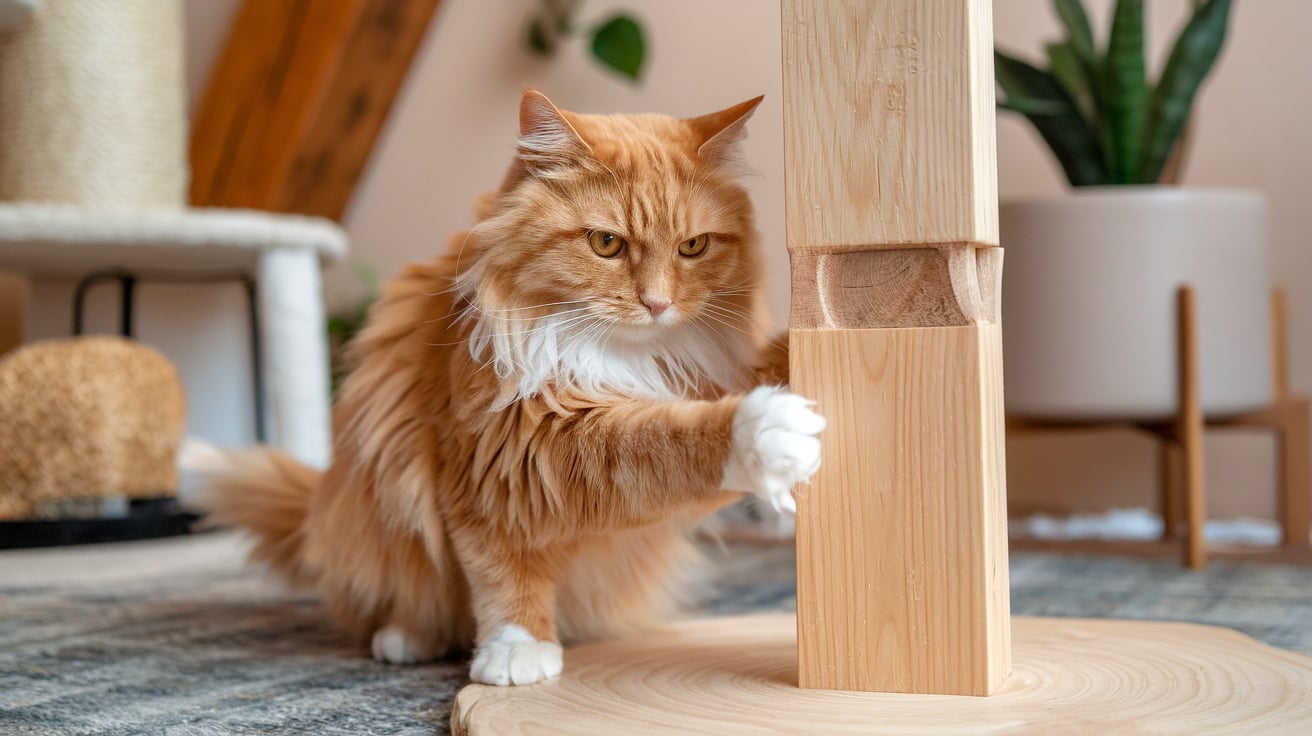Introduction
In addition to their sharp claws, cats are famous for their grace, agility, and sharpness. As a responsible pet owner, you may have noticed little, thin, claw-like pieces around the house and wondered, “Do cat nails shed?” The answer is yes. Just like how human hair and nails grow continuously, a cat’s claws also go through a natural cycle of growth and shedding.
Claw shedding is an important part of a cat’s overall health. Unlike human nails, which simply grow longer, a cat’s claws grow in layers. As the outer layer becomes worn out or damaged, it sheds away to reveal a sharper, new claw underneath. This process helps cats maintain sharp, healthy claws for climbing, hunting, and self-defense.
What Is Cat Nail Shedding?
Cat nail shedding is a natural process where the outer layer of a cat’s claw peels away, allowing a new, sharper layer to emerge underneath. Unlike human nails, which grow continuously in length, a cat’s claws grow in layers. As cats use their claws for scratching, climbing, or self-defense, the outer layer of the nail becomes worn or damaged. To maintain the health and sharpness of their claws, this outer layer eventually detaches, leaving behind a fresh, healthier nail.
This shedding process helps keep the claws functional and sharp for a cat’s daily activities. You might find these thin, transparent pieces of claw around scratching posts, furniture, or even on the floor, which is a sign that the process is occurring as it should. This is an essential part of feline grooming and is entirely normal. Cat owners should be mindful of this natural cycle, ensuring that their cats have appropriate surfaces to scratch to support healthy nail shedding.
Why Do Cats Shed Their Nails?
Cats shed their nails as part of a natural growth cycle that ensures their claws stay sharp and healthy. Unlike human nails, which grow continuously, a cat’s claws develop in layers. As these layers grow, the outermost one eventually becomes worn or damaged from daily use. To replace it, the old layer sheds off, revealing a fresh, sharper claw underneath. This is an ongoing process that happens throughout a cat’s life, keeping their claws functional and ready for their instinctual behaviors like hunting, climbing, or defending themselves.
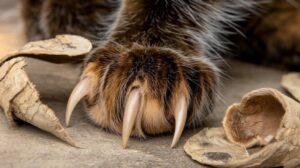
Self-grooming is another key reason why cats shed their nails. By scratching surfaces such as trees or scratching posts, cats help speed up the shedding process. Scratching not only removes the dead outer layer of the claw but also helps to maintain sharpness. This habit is deeply ingrained in their nature and is essential for grooming, as well as marking territory. Shedding and sharpening their claws ensure that they are always prepared, whether for play, climbing, or protection.
How Often Do Cats Shed Their Nails?
Cats shed their nails regularly, but the exact frequency can vary depending on several factors. On average, cats shed their claws every few weeks, though some may shed more often. Active cats that frequently scratch on surfaces like scratching posts or outdoor trees may shed their nails more often, as the outer layers wear down quicker due to regular use. Younger cats also tend to shed more frequently as their claws grow faster, while older cats may have a slower shedding cycle.
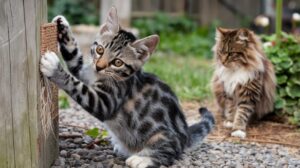
Several factors influence the frequency of nail shedding. The environment plays a big role—cats that have access to various surfaces to scratch will naturally shed their claws more often. Additionally, health conditions can impact the process. A well-nourished cat with a healthy diet will likely experience regular nail shedding, whereas poor nutrition or health problems might slow the process. Indoor cats may also shed their nails less frequently compared to outdoor cats, as their claws might not get the same level of wear and tear. Regardless of the frequency, providing scratching surfaces helps ensure cats can shed their nails naturally and maintain healthy claws.
Signs of Nail Shedding
One clear sign of nail shedding is finding hollow claw sheaths—thin, transparent pieces of the old claw. These sheaths often appear near scratching posts or other areas where your cat frequently scratches. They are a natural part of the shedding process and indicate that your cat’s claws are renewing.
Behaviorally, you might notice your cat scratching more often or grooming its paws. Scratching helps dislodge the old claw layers, while grooming ensures the claws stay sharp and clean. These actions are normal and part of your cat’s routine for maintaining healthy claws.
How Cats Shed Their Nails
Cats shed their nails primarily through scratching. When cats scratch various surfaces, they help remove the old, outer layer of their claws. This natural behavior is crucial as it not only aids in shedding but also helps keep their claws sharp and functional. Scratching acts like a built-in nail file, gradually wearing away the old layers to reveal fresher, sharper claws underneath.
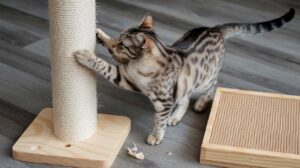
Scratching posts and surfaces play a significant role in this process. Providing your cat with appropriate scratching posts ensures they have the right tools to help manage their nail shedding. These posts are designed to withstand the wear and tear of scratching, allowing your cat to engage in this behavior regularly and effectively. Offering a variety of scratching surfaces, such as vertical posts and horizontal pads, supports healthy nail maintenance and helps prevent claw-related issues.
Is Cat Nail Shedding Normal?
Cat nail shedding is a normal and healthy part of feline grooming. As a cat’s claws grow, the outer layers wear down and shed naturally, making way for new, sharper claws. This process is essential for maintaining the functionality and sharpness of their claws, which are crucial for their daily activities like scratching, climbing, and hunting. Regular shedding helps ensure that their claws remain in good condition.
However, there are situations when you should be concerned about your cat’s claw health. If you notice excessive shedding or bleeding, or if your cat seems to be in pain while scratching or walking, it may indicate an underlying issue. Conditions such as infections, injuries, or abnormal nail growth could be affecting your cat’s claws. If you observe any unusual symptoms or behaviors, it’s best to consult your veterinarian to ensure your cat’s claws are healthy and that any potential problems are addressed promptly.
Caring for Your Cat’s Claws
Proper care of your cat’s claws involves regular nail trimming to manage length and prevent potential issues. Use cat-specific nail clippers or a human nail trimmer designed for small animals. Trim only the sharp tips, avoiding the quick, which is the pinkish area containing blood vessels and nerves. If you’re unsure about trimming, ask your veterinarian or a professional groomer for guidance to ensure you’re doing it safely and effectively.
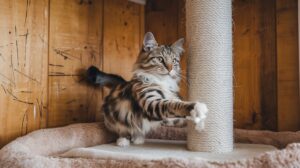
Scratching posts are essential for maintaining your cat’s claw health. They help cats naturally shed their claws and keep them sharp and healthy. Provide a variety of scratching surfaces, such as vertical posts, horizontal pads, or even scratching mats. Place these posts in inaccessible areas where your cat likes to scratch, encouraging regular use and preventing damage to your furniture.
Monitoring your cat’s claw health is crucial. Regularly check for any signs of abnormalities, such as swelling, discoloration, or unusual growth patterns. If you notice any problems or changes in behavior related to their claws, consult your veterinarian for advice. Keeping an eye on their claws and providing proper care helps ensure your cat remains comfortable and healthy.
Conclusion
Understanding cat claw shedding is essential for ensuring your feline friend’s health and comfort. Shedding is a natural process where the outer layer of the claws falls away, allowing new, sharper claws to grow. This process is vital for maintaining the functionality of their claws, which they use for scratching, climbing, and hunting.
Proper care involves regular nail trimming to manage length and prevent issues, as well as providing appropriate scratching posts to facilitate natural claw shedding. Keeping an eye on your cat’s claw health and watching for any signs of abnormalities ensures that any potential problems are addressed promptly. By incorporating these practices into your routine, you help your cat maintain healthy, well-managed claws and contribute to their overall well-being.
